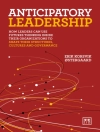John Philip Jones, best-selling author of WhatÆs in a Name?, Advertising and the Concept of Brands, and When Ads Work: New Proof That Advertising Triggers Sales, has edited an authoritative handbook of research procedures that determine effective advertising. All participants in the advertising processùclients, media, and agenciesùare fully represented in How Advertising Works. Chapter authors reflect a global mix of academic and professional backgrounds and include Leo Bogart, Andrew Ehrenberg, Simon Broadbent, Herbert Krugman, and John Philip Jones himself. Most chapters have been specifically written for this volume and are complemented by a few adaptations of classic articles. The result is a single ‘knowledge bank’ of theory and practice for advertising students and professionals. Future handbooks, also edited by John Philip Jones, will address key topics of advertising agency operation, brand building, and multinational advertising. How Advertising Works will be of interest to students and professionals in advertising, marketing, and communication
विषयसूची
Introduction – John Philip Jones
PART ONE: MARKETS AND ADVERTISING
The Advertising Process – Timothy Joyce
The Turbulent Depths of Marketing – Leo Bogart
Brand Growth – Josh Mc Queen, Alice K Sylvester and Scott D Moore
The Past, The Present
Penetration, Brand Loyalty and the Penetration Supercharge – John Philip Jones
Repetitive Advertising and the Consumer – Andrew S C Ehrenberg
Is Advertising Still Salesmanship? – John Philip Jones
Expansion Advertising – Brian Wansink
PART TWO: RESEARCH BEFORE THE ADVERTISING RUNS
Market Research – John Philip Jones
Why We Need To Be Careful
Likeability – Alexander L Biel
Why Advertising That Is Well Liked Sells Well
Qualitative Research in Advertising – Jan S Slater
Perceptual Mapping – John Philip Jones
Brain Wave Measures of Media Involvement – Herbert E Krugman
Consumer Preferences as Predictions – Alfred Politz and W Edwards Deming
Quantitative Pretesting for Television Advertising – John Philip Jones
Rough versus Finished Commercials in Research – Paula Pierce
Electronic Media Audience Measurement – Fiona Chew
Consumer Purchasing, Starch, and STAS – John Philip Jones
Does Magazine Advertising Produce an Immediate Effect?
PART THREE: RESEARCH AFTER THE ADVERTISING HAS RUN
Retail Research, Consumer Panels, Store Checking – John Philip Jones
Campaign Evaluation through Modeling – Simon Broadbent
Tracking Studies – Paul Feldwick
Television Advertising – Nigel Hollis
Short- and Long-Term Effects
Do Award-Winning Commercials Sell? – Donald Gunn
Single-Source Research – John Philip Jones
Is STAS a Uniform Measure for All Types of Buyers? – John Philip Jones
PART FOUR: ADVERTISING EFFECTS, INCLUDING SOME UNEXPECTED ONES
How Much Advertising Works? – John Philip Jones
Reduced Advertising and Its Impact on Profitability and Market Share in a Recession – Alexander L Biel
Margin and Price Effects of Manufacturers′ Brand Advertising – Robert L Steiner
Macroeconomic Effects – John Philip Jones
The Influence of Advertising on Overall Sales Levels
लेखक के बारे में
John Philip Jones entered academe in 1981 after a 25-year career in advertising with J. Walter Thompson in Europe, is a tenured Professor in the Newhouse School at Syracuse University, and was Chairman of the Advertising Department for seven years. He has published ten books on advertising and numerous journal articles, and his work has been translated into German, Spanish, Japanese, Korean, Chinese, Portuguese, Turkish and Arabic. In 1991, John Philip Jones was named by the American Advertising Federation as the Distinguished Advertising Educator of the Year. In the same year he became a member of the Council of Judges of the Advertising Hall of Fame. In 1994, he was elected a member of the National Advertising Review Board. In 1996, he received a major award from Cowles Business Media and the American Association of Advertising Agencies for leadership in the media field. There were two prize winners, the other being NBC Sports. He received the Telmar Award in 1997, for extending the concept of Short-Term Advertising Strength (STAS) from television to print media. In 2001, he received the Syracuse University Chancellor’s Citation for Exceptional Academic Achievement.












